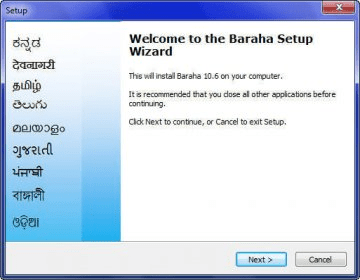
The angiogram of SMA was then performed and demonstrated retrograde opacification of the hepatic arteries through PDAs ( Fig. Hepatic angiogram was done and showed occlusion of the origin of the CA. Few hours later, the patient collapsed again and referred immediately to angio-suite for TAE. The bleeder artery could not be detected during the surgery therefore an initial hemostasis was achieved by perihepatic packing. Owing to the hemodynamically unstable conditions of the patient, she was referred emergently to the operating room for exploratory laparotomy where a massive hemoperitoneum and a grade 4 liver injury of the right liver lobe were found.
#Key for barah pad free
The focused assessment by sonography for trauma Focused assessment with sonography for trauma (FAST) was performed in emergency department and revealed liver injury with perihepatic free fluid confirming hepatic active hemorrhage.

The follow-up demonstrated improvement in patient’s conditions.Ī 45-year-old female presented to the emergency, with hypovolemic shock signs, after having a car crash trauma inducing active hepatic hemorrhage. The same microcatheter was used to perform selective TAE of the right hepatic artery using gelatin sponge ( Fig. PDAs were then selectively catheterized using 2.7F microcatheter and the angiogram showed hypervascular HCC in the right liver lobe ( Fig. Despite several attempts to cross the CA stenosis, the direct catheterization of the liver arteries remained unsuccessful. The SMA angiogram showed retrograde opacification of the hepatic arteries through PDAs confirming the severe stenosis of CA origin ( Fig. The patient was then referred to the angio-suite for an urgent TAE. The same CT demonstrated non-calcified, short localized stenosis with a characteristic superior hook shape sign at the origin of CA suggesting cMAL ( Fig. Contrast-enhanced CT scan revealed an extravasation of contrast in the arterial phase from the HCC and interruption of the capsule surrounding the lesion confirming the diagnosis of spontaneous rupture ( Fig. The patient underwent urgent ultrasound screening, which demonstrated exophytic right lobe focal hepatic lesion associated with hyperechoic free perihepatic fluid raising the possibility of spontaneous rupture of the tumor with active hemorrhage. In both cases, the cause of the CA occlusion was confirmed to be cMAL by performing contrast-enhanced CT (CECT) and TAE of the hepatic arteries was successfully performed by choosing PADs route.Ī 46-year-old male known to have Hepatocellular carcinoma (HCC) presented to the emergency at our institute with hemoperitoneum and early signs of hypovolemic shock.

Here we present 2 cases of life-threatening hepatic hemorrhage indicated for emergency TAE.

In such situations, PDAs catheterization via the superior mesenteric artery (SMA) are the main alternative options to get access to the liver arteries. Atherosclerosis, pancreatitis, tumor invasion, CA agenesis, iatrogenic arterial trauma due to catheterization or surgery and compressive median arcuate ligament (cMAL) are all suggested as causes of CA stenosis or occlusion. However, the direct catheterization of the hepatic arteries through CA is not always possible due to the extensive stenosis or occlusion of the CA.

Transarterial hepatic interventions through celiac axis (CA) are very common nowadays for many liver treatments including embolization for hemorrhage, chemoembolization, radioembolization and hepatic arterial infusion chemotherapy.


 0 kommentar(er)
0 kommentar(er)
